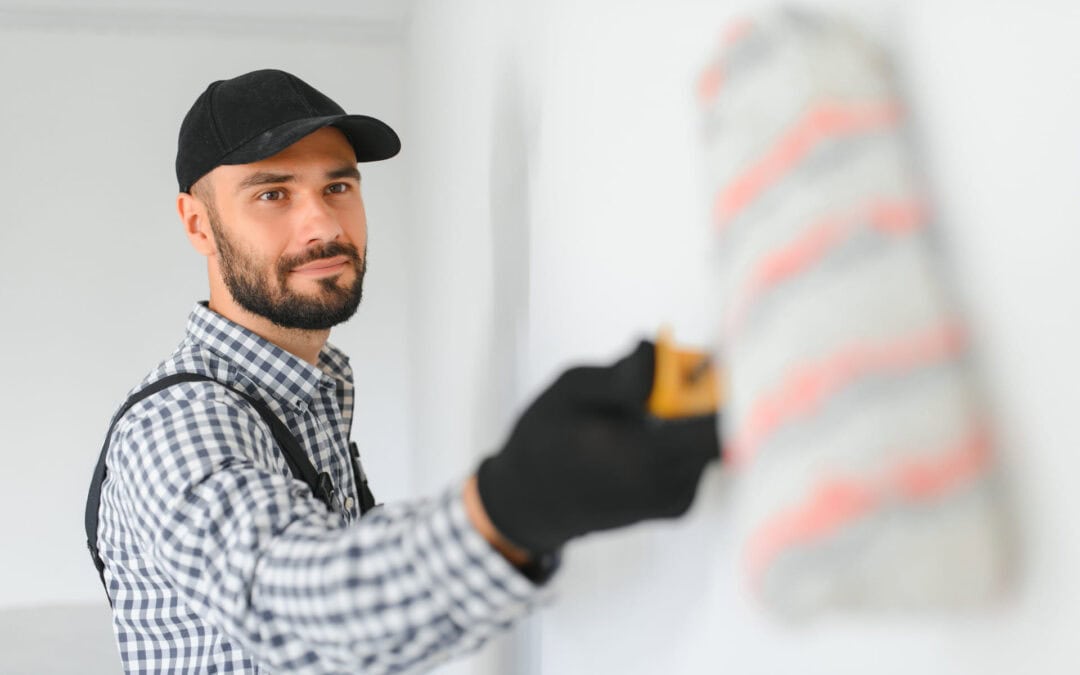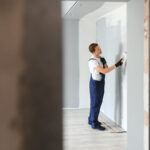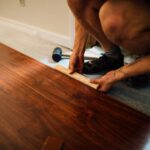Painting a residential or commercial space might appear simple, but minor missteps can lead to streaks, poor coverage, and a rough texture that diminishes the overall look. Many property owners take on DIY painting projects, assuming that patience and a steady hand will produce professional results. A seasoned painting company brings the right knowledge, high-quality materials, and precise techniques to avoid costly and time-consuming errors. Understanding the most frequent painting mistakes and how experts prevent them can help homeowners and business owners achieve a long-lasting and polished finish.
Selecting the Right Paint Ensures Durability and Longevity
Choosing the wrong type of paint can result in premature fading, cracking, or an unattractive finish. A business owner once repainted their exterior signage using leftover interior paint, assuming all paints function the same. Within weeks, exposure to sun and rain caused it to fade and peel, leaving the storefront looking neglected. A knowledgeable painting company selects the appropriate type of paint for each surface to maximize resilience and visual appeal.
- Exterior paints include weather-resistant additives to withstand moisture, direct sunlight, and temperature shifts.
- Interior paints are formulated to resist smudging and scuffing, maintaining a sleek appearance.
- Specialty coatings provide extra protection for materials like brick, stucco, or metal.
Choosing the Right Finish Enhances Durability and Aesthetic Appeal
Selecting an unsuitable finish can lead to a dull or impractical surface that doesn’t hold up to daily wear. A homeowner once used flat paint in a high-traffic hallway, unaware that it would quickly show dirt and scuff marks. After only a few months, the walls appeared worn and difficult to clean. A professional painting company ensures that the proper finish is chosen for the intended space.
- Glossy and semi-gloss finishes repel moisture and allow for easy cleaning, making them ideal for kitchens and bathrooms.
- Matte and eggshell finishes offer a smooth, elegant texture but require careful maintenance to avoid smudging.
- Satin finishes provide a balance of durability and subtle sheen, making them an excellent choice for living rooms and hallways.
Skipping Surface Preparation Causes Peeling and Chipping
Neglecting to prepare surfaces properly leads to weak adhesion, resulting in peeling, flaking, and an uneven finish. A homeowner once applied a fresh coat of paint over walls covered in dust and grease, expecting the new layer to stick. Within a few months, sections of paint began to bubble and peel, exposing the previous color. A qualified painting company follows a structured preparation routine to ensure paint adheres properly and lasts for years.
- Cleaning walls removes accumulated dust, grease, and contaminants that prevent paint from bonding.
- Sanding and repairing cracks create a uniform surface, reducing texture inconsistencies.
- Priming strengthens adhesion and extends the lifespan of the paint.
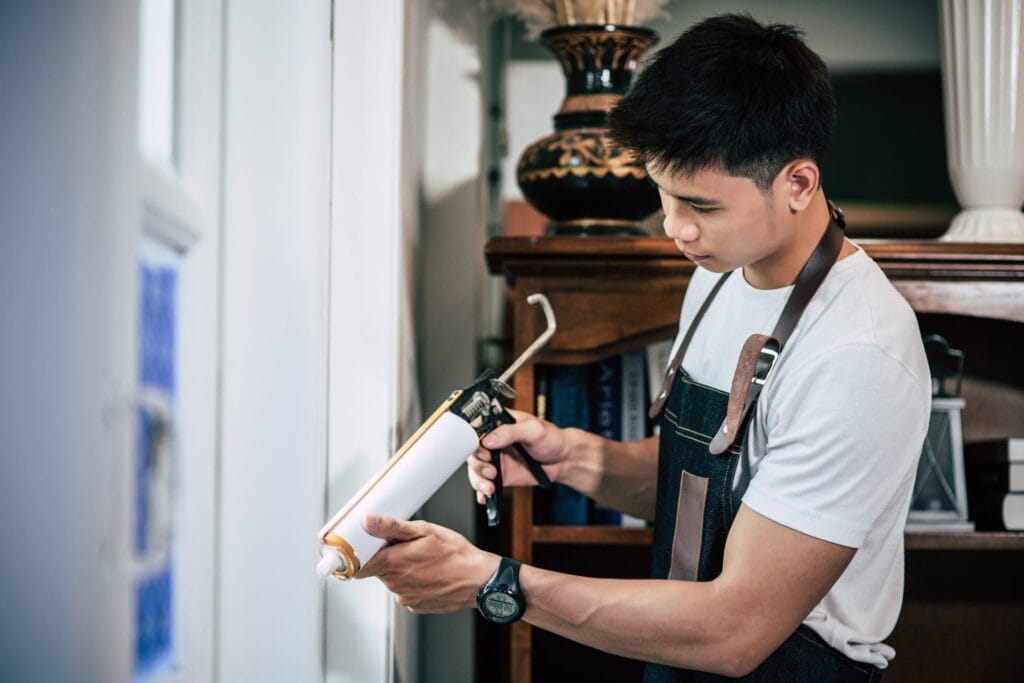
Skipping Primer Results in Uneven Coverage and Discoloration
Applying paint without a primer often leads to patchy color distribution, visible stains, and a weak bond. A homeowner once attempted to paint over a deep red accent wall with a soft beige color, thinking multiple coats of paint would be enough. Even after four applications, the original color still showed through in some areas. A trusted painting company ensures that primer is used to create a smooth, even foundation.
- Primers block stains and prevent previous colors from bleeding through.
- High-bonding primers help paint adhere effectively to glossy or previously painted surfaces.
- Tinted primers reduce the number of coats needed when transitioning between drastically different colors.
Inconsistent Paint Application Leads to Streaks and Patchy Coverage
Applying uneven layers of paint creates streaks, roller marks, and inconsistent shading. A business owner once used a cheap roller to repaint their office walls, believing all rollers produced the same finish. The final result had visible streaks and variations in color intensity, requiring an additional coat to fix. A painting company ensures an even application using advanced tools and refined techniques.
- High-quality brushes and rollers prevent streaking and provide smooth, consistent coverage.
- Proper rolling techniques eliminate lap marks and roller trails.
- Applying multiple thin layers results in deeper color saturation and extended durability.
Allowing Paint to Dry Completely Prevents Peeling and Smudging
Applying additional coats before the first layer has dried leads to peeling, bubbling, or a tacky surface that attracts dust. A homeowner once repainted their bedroom and applied the second coat too soon, assuming the faster approach would save time. Within days, the paint started lifting in small sections, revealing uneven patches. A painting company follows an appropriate drying schedule to ensure long-lasting, high-quality results.
- Water-based paints require at least two to four hours between coats for proper bonding.
- Oil-based paints need up to 24 hours to cure, preventing cracks and adhesion problems.
- Humidity and airflow influence drying times and should be factored into the painting schedule.
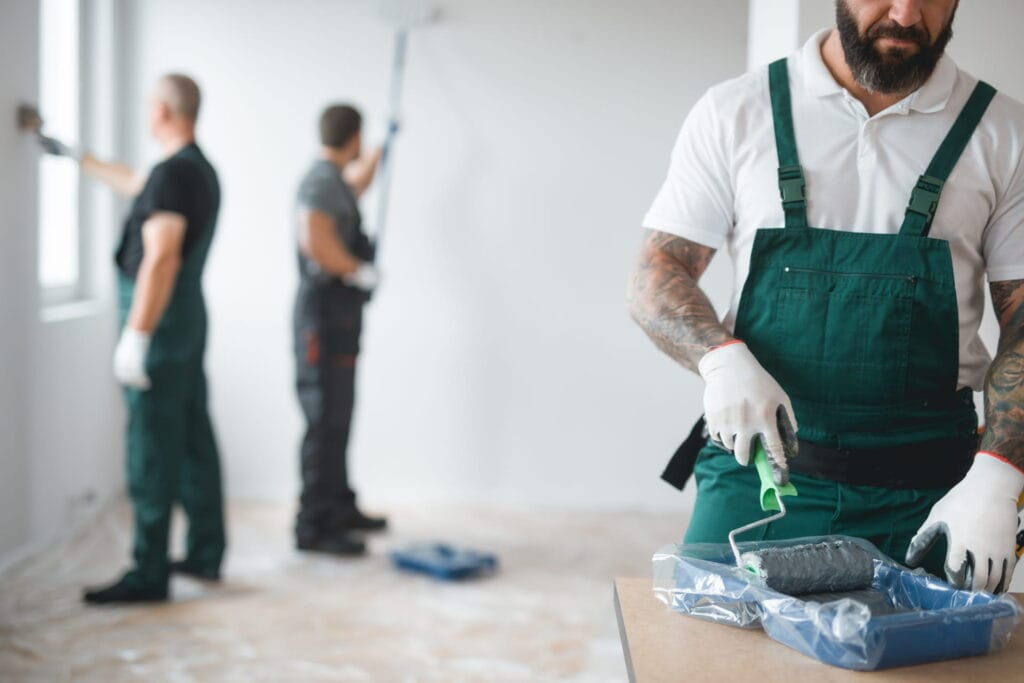
Improper Use of Painter’s Tape Creates Uneven Edges and Bleeding
Misusing painter’s tape often results in jagged lines, paint bleeding underneath, or tape pulling off dried sections. A business owner once taped off a feature wall but left the tape on too long, causing it to lift chunks of dried paint when removed. A detail-oriented painting company applies and removes painter’s tape correctly to create crisp, professional-looking edges.
- Taping off dry, dust-free surfaces improves adhesion and prevents shifting.
- Removing tape at a shallow angle while the paint is slightly wet ensures clean edges.
- High-quality painter’s tape reduces the risk of paint seeping underneath and minimizes extra touch-ups.
Painting in Poor Conditions Affects Drying and Texture
Temperature, humidity, and airflow play a crucial role in how paint dries and adheres. A homeowner once painted their outdoor deck on a humid afternoon, unaware that excessive moisture would delay drying and create an uneven finish. The next morning, the paint was still tacky, collecting dust and debris. A painting company monitors environmental conditions to achieve the best results.
- Painting between 50°F and 85°F ensures proper drying and adhesion.
- Excessive humidity slows drying time and can cause streaking or bubbling.
- Direct sunlight accelerates drying too quickly, increasing the risk of brush marks and cracking.
Failing to Protect Surrounding Areas Causes Unnecessary Damage
Paint splatters on flooring, furniture, and fixtures can be difficult to remove, leading to costly damage. A business owner once painted their reception area without covering the floors, leaving noticeable paint stains on the tile. A painting company takes extra precautions to safeguard nearby surfaces.
- Drop cloths and plastic sheets protect floors, furniture, and décor from accidental splatters.
- Masking techniques shield baseboards, trim, and fixtures from stray paint.
- Professional cleanup ensures that no paint residue remains once the job is complete.
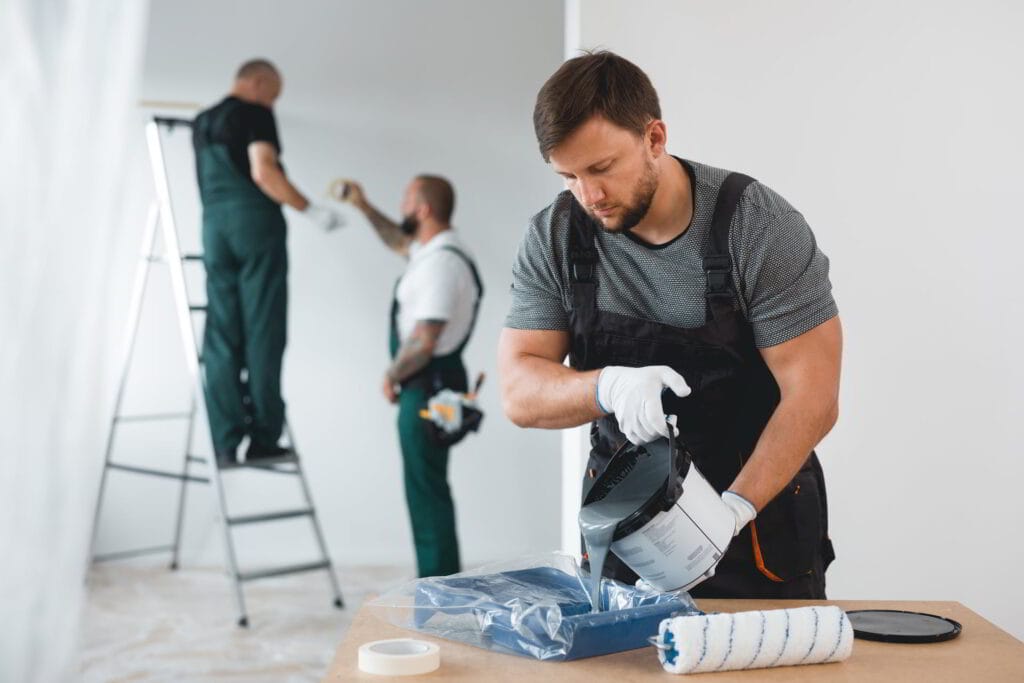
Incorrect Paint Measurements Lead to Waste and Color Inconsistencies
Running out of paint midway through a project can result in mismatched colors, while overestimating leads to unnecessary expenses. A homeowner once underestimated their paint needs and had to purchase more, only to discover the new batch had a slightly different tint. A painting company calculates precise paint quantities to ensure consistency and avoid waste.
- Surface texture, color changes, and the number of coats influence the required paint volume.
- Purchasing excessive paint leads to storage challenges and wasted materials.
- Mixing all cans together before application guarantees a uniform color throughout.
Frequent Painting Mistakes a Painting Company Prevents
Hiring professionals eliminates the most common DIY painting errors, ensuring a smooth and durable finish. Small mistakes often lead to additional costs and wasted time, but experienced painters complete the job correctly on the first attempt. The right preparation, tools, and application techniques create a noticeable difference.
- Proper preparation prevents flaking, bubbling, and uneven adhesion.
- Expert application techniques result in seamless, high-quality finishes.
- Adequate drying conditions contribute to long-term durability and resistance to wear.
Frequently Asked Questions
What causes fresh paint to peel off walls?
Poor adhesion from unclean surfaces, missing primer, or applying layers too quickly can lead to peeling.
Which type of paint provides the longest-lasting results?
Acrylic latex paints offer superior durability, resisting moisture, fading, and daily wear.
How many coats of paint should be applied for full coverage?
Most walls need at least two coats, with darker-to-lighter transitions sometimes requiring three.
Can cold weather affect how paint dries?
Low temperatures slow drying times and can result in cracking or improper adhesion.
What is the most common mistake DIY painters make?
Skipping preparation leads to weak adhesion, streaks, and an unpolished appearance.
Home Garden Wire is your go-to resource for the latest in home and garden services. We provide reliable, actionable information on DIY home improvement, home maintenance, eco-friendly practices, and home design. Our well-researched content empowers homeowners with practical solutions and expert advice. Trust Home Garden Wire to help you enhance your living spaces with tips on home renovation, sustainable living, and innovative home services.

